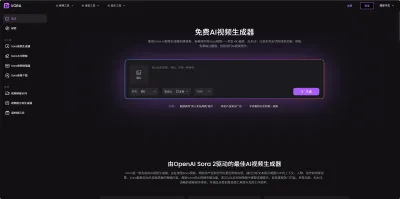runc
<a href="https://actuated.dev"><img alt="Arm CI sponsored by Actuated" src="https://docs.actuated.dev/images/actuated-badge.png" width="120px"></img></a>
Introduction
runc is a CLI tool for spawning and running containers on Linux according to the OCI specification.
Releases
You can find official releases of runc on the release page.
All releases are signed by one of the keys listed in the runc.keyring file in the root of this repository.
Security
The reporting process and disclosure communications are outlined here.
Security Audit
A third party security audit was performed by Cure53, you can see the full report here.
Building
runc only supports Linux. It must be built with Go version 1.21 or higher.
Pre-Requisites
Go
NOTE: if building with Go 1.22.x, make sure to use 1.22.4 or a later version (see issue #4233 for more details).
Utilities and Libraries
In addition to Go, building runc requires multiple utilities and libraries to be installed on your system.
On Ubuntu/Debian, you can install the required dependencies with:
apt update && apt install -y make gcc linux-libc-dev libseccomp-dev pkg-config git
On CentOS/Fedora, you can install the required dependencies with:
yum install -y make gcc kernel-headers libseccomp-devel pkg-config git
On Alpine Linux, you can install the required dependencies with:
apk --update add bash make gcc libseccomp-dev musl-dev linux-headers git
The following dependencies are optional:
libseccomp- only required if you enable seccomp support; to disable, see Build Tags
Build
# create a 'github.com/opencontainers' in your GOPATH/src cd github.com/opencontainers git clone https://github.com/opencontainers/runc cd runc make sudo make install
You can also use go get to install to your GOPATH, assuming that you have a github.com parent folder already created under src:
go get github.com/opencontainers/runc cd $GOPATH/src/github.com/opencontainers/runc make sudo make install
runc will be installed to /usr/local/sbin/runc on your system.
Version string customization
You can see the runc version by running runc --version. You can append a custom string to the
version using the EXTRA_VERSION make variable when building, e.g.:
make EXTRA_VERSION="+build-1"
Bear in mind to include some separator for readability.
Build Tags
runc supports optional build tags for compiling support of various features,
with some of them enabled by default (see BUILDTAGS in top-level Makefile).
To change build tags from the default, set the BUILDTAGS variable for make,
e.g. to disable seccomp:
make BUILDTAGS=""
| Build Tag | Feature | Enabled by Default | Dependencies |
|---|---|---|---|
seccomp | Syscall filtering using libseccomp. | yes | libseccomp |
!runc_nodmz | Reduce memory usage for CVE-2019-5736 protection by using a small C binary, see memfd-bind for more details. runc_nodmz disables this experimental feature and causes runc to use a different protection mechanism which will further increases memory usage temporarily during container startup. To enable this feature you also need to set the RUNC_DMZ=true environment variable. | yes |
The following build tags were used earlier, but are now obsoleted:
- nokmem (since runc v1.0.0-rc94 kernel memory settings are ignored)
- apparmor (since runc v1.0.0-rc93 the feature is always enabled)
- selinux (since runc v1.0.0-rc93 the feature is always enabled)
Running the test suite
runc currently supports running its test suite via Docker.
To run the suite just type make test.
make test
There are additional make targets for running the tests outside of a container but this is not recommended as the tests are written with the expectation that they can write and remove anywhere.
You can run a specific test case by setting the TESTFLAGS variable.
# make test TESTFLAGS="-run=SomeTestFunction"
You can run a specific integration test by setting the TESTPATH variable.
# make test TESTPATH="/checkpoint.bats"
You can run a specific rootless integration test by setting the ROOTLESS_TESTPATH variable.
# make test ROOTLESS_TESTPATH="/checkpoint.bats"
You can run a test using your container engine's flags by setting CONTAINER_ENGINE_BUILD_FLAGS and CONTAINER_ENGINE_RUN_FLAGS variables.
# make test CONTAINER_ENGINE_BUILD_FLAGS="--build-arg http_proxy=http://yourproxy/" CONTAINER_ENGINE_RUN_FLAGS="-e http_proxy=http://yourproxy/"
Go Dependencies Management
runc uses Go Modules for dependencies management.
Please refer to Go Modules for how to add or update
new dependencies.
# Update vendored dependencies
make vendor
# Verify all dependencies
make verify-dependencies
Using runc
Please note that runc is a low level tool not designed with an end user in mind. It is mostly employed by other higher level container software.
Therefore, unless there is some specific use case that prevents the use of tools like Docker or Podman, it is not recommended to use runc directly.
If you still want to use runc, here's how.
Creating an OCI Bundle
In order to use runc you must have your container in the format of an OCI bundle.
If you have Docker installed you can use its export method to acquire a root filesystem from an existing Docker container.
# create the top most bundle directory mkdir /mycontainer cd /mycontainer # create the rootfs directory mkdir rootfs # export busybox via Docker into the rootfs directory docker export $(docker create busybox) | tar -C rootfs -xvf -
After a root filesystem is populated you just generate a spec in the format of a config.json file inside your bundle.
runc provides a spec command to generate a base template spec that you are then able to edit.
To find features and documentation for fields in the spec please refer to the specs repository.
runc spec
Running Containers
Assuming you have an OCI bundle from the previous step you can execute the container in two different ways.
The first way is to use the convenience command run that will handle creating, starting, and deleting the container after it exits.
# run as root cd /mycontainer runc run mycontainerid
If you used the unmodified runc spec template this should give you a sh session inside the container.
The second way to start a container is using the specs lifecycle operations.
This gives you more power over how the container is created and managed while it is running.
This will also launch the container in the background so you will have to edit
the config.json to remove the terminal setting for the simple examples
below (see more details about runc terminal handling).
Your process field in the config.json should look like this below with "terminal": false and "args": ["sleep", "5"].
"process": { "terminal": false, "user": { "uid": 0, "gid": 0 }, "args": [ "sleep", "5" ], "env": [ "PATH=/usr/local/sbin:/usr/local/bin:/usr/sbin:/usr/bin:/sbin:/bin", "TERM=xterm" ], "cwd": "/", "capabilities": { "bounding": [ "CAP_AUDIT_WRITE", "CAP_KILL", "CAP_NET_BIND_SERVICE" ], "effective": [ "CAP_AUDIT_WRITE", "CAP_KILL", "CAP_NET_BIND_SERVICE" ], "inheritable": [ "CAP_AUDIT_WRITE", "CAP_KILL", "CAP_NET_BIND_SERVICE" ], "permitted": [ "CAP_AUDIT_WRITE", "CAP_KILL", "CAP_NET_BIND_SERVICE" ], "ambient": [ "CAP_AUDIT_WRITE", "CAP_KILL", "CAP_NET_BIND_SERVICE" ] }, "rlimits": [ { "type": "RLIMIT_NOFILE", "hard": 1024, "soft": 1024 } ], "noNewPrivileges": true },
Now we can go through the lifecycle operations in your shell.
# run as root cd /mycontainer runc create mycontainerid # view the container is created and in the "created" state runc list # start the process inside the container runc start mycontainerid # after 5 seconds view that the container has exited and is now in the stopped state runc list # now delete the container runc delete mycontainerid
This allows higher level systems to augment the containers creation logic with setup of various settings after the container is created and/or before it is deleted. For example, the container's network stack is commonly set up after create but before start.
Rootless containers
runc has the ability to run containers without root privileges. This is called rootless. You need to pass some parameters to runc in order to run rootless containers. See below and compare with the previous version.
Note: In order to use this feature, "User Namespaces" must be compiled and enabled in your kernel. There are various ways to do this depending on your distribution:
- Confirm
CONFIG_USER_NS=yis set in your kernel configuration (normally found in/proc/config.gz) - Arch/Debian:
echo 1 > /proc/sys/kernel/unprivileged_userns_clone - RHEL/CentOS 7:
echo 28633 > /proc/sys/user/max_user_namespaces
Run the following commands as an ordinary user:
# Same as the first example mkdir ~/mycontainer cd ~/mycontainer mkdir rootfs docker export $(docker create busybox) | tar -C rootfs -xvf - # The --rootless parameter instructs runc spec to generate a configuration for a rootless container, which will allow you to run the container as a non-root user. runc spec --rootless # The --root parameter tells runc where to store the container state. It must be writable by the user. runc --root /tmp/runc run mycontainerid
Supervisors
runc can be used with process supervisors and init systems to ensure that containers are restarted when they exit.
An example systemd unit file looks something like this.
[Unit] Description=Start My Container [Service] Type=forking ExecStart=/usr/local/sbin/runc run -d --pid-file /run/mycontainerid.pid mycontainerid ExecStopPost=/usr/local/sbin/runc delete mycontainerid WorkingDirectory=/mycontainer PIDFile=/run/mycontainerid.pid [Install] WantedBy=multi-user.target
More documentation
- Spec conformance
- cgroup v2
- Checkpoint and restore
- systemd cgroup driver
- Terminals and standard IO
- Experimental features
License
The code and docs are released under the [Apache 2.0
编辑推荐精选


Vora
免费创建高清无水印Sora视频
Vora是一个免费创建高清无水印Sora视频的AI工具


Refly.AI
最适合小白的AI自动化工作流平台
无需编码,轻松生成可复用、可变现的AI自动化工作流


酷表ChatExcel
大模型驱动的Excel数据处理工具
基于大模型交互的表格处理系统,允许用户通过对话方式完成数据整理和可视化分析。系统采用机器学习算法解析用户指令,自动执行排序、公式计算和数据透视等操作,支持多种文件格式导入导出。数据处理响应速度保持在0.8秒以内,支持超过100万行数据的即时分析。


TRAE编程
AI辅助编程,代码自动修复
Trae是一种自适应的集成开发环境(IDE),通过自动化和多元协作改变开发流程。利用Trae,团队能够更快速、精确地编写和部署代码,从而提高编程效率和项目交付速度。Trae具备上下文感知和代码自动完成功能,是提升开发效率的理想工具。


AIWritePaper论文写作
AI论文写作指导平台
AIWritePaper论文写作是一站式AI论文写作辅助工具,简化了选题、文献检索至论文撰写的整个过程。通过简单设定,平台可快速生成高质量论文大纲和全文,配合图表、参考文献等一应俱全,同时提供开题报告和答辩PPT等增值服务,保障数据安全,有效提升写作效率和论文质量。


博思AIPPT
AI一键生成PPT,就用博思AIPPT!
博思AIPPT,新一代的AI生成PPT平台,支持智能生成PPT、AI美化PPT、文本&链接生成PPT、导入Word/PDF/Markdown文档生成PPT等,内置海量精美PPT模板,涵盖商务、教育、科技等不同风格,同时针对每个页面提供多种版式,一键自适应切换,完美适配各种��办公场景。


潮际好麦
AI赋能电商视觉革命,一站式智能商拍平台
潮际好麦深耕服装行业,是国内AI试衣效果最好的软件。使用先进AIGC能力为电商卖家批量提供优质的、低成本的商拍图。合作品牌有Shein、Lazada、安踏、百丽等65个国内外头部品牌,以及国内10万+淘宝、天猫、京东等主流平台的品牌商家,为卖家节省将近85%的出图成本,提升约3倍出图效率,让品牌能够快速上架。


iTerms
企业专属的AI法律顾问
iTerms是法大大集团旗下法律子品牌,基于最先进的大语言模型(LLM)、专业的法律知识库和强大的智能体架构,帮助企业扫清合规障碍,筑牢风控防线,成为您企业专属的AI法律顾问。


SimilarWeb流量提升
稳定高效的流量提升解决方案,助力品牌曝光
稳定高效的流量提升解决方案,助力品牌曝光


Sora2视频免费生成
最新版Sora2模型免费使用,一键生成无水印视频
最新版Sora2模型免费使用,一键生成无水印视频
推荐工具精选
AI云服务特惠
懂AI专属折扣关注微信公众号
最新AI工具、AI资讯
独家AI资源、AI项目落地

微信扫一扫关注公众号






